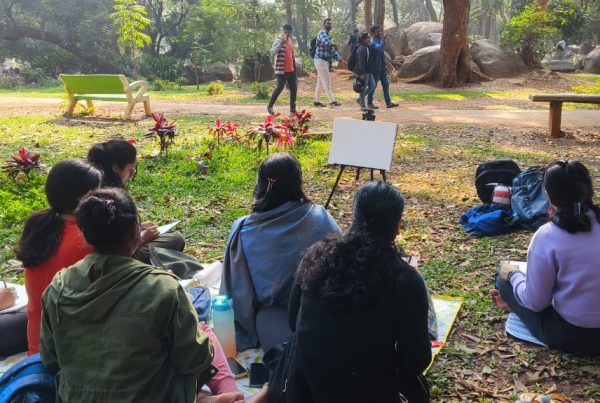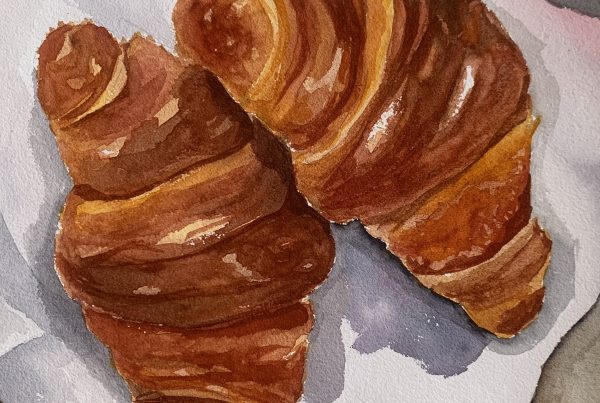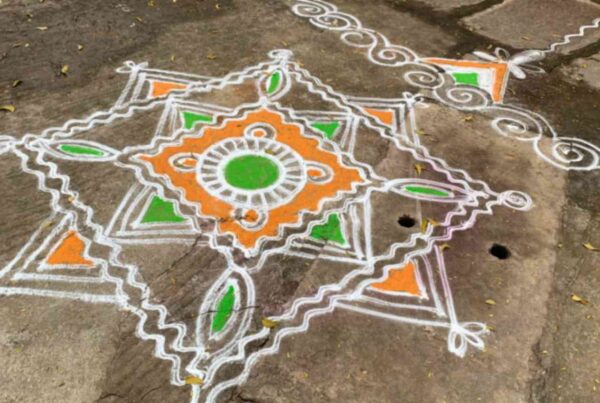The South Indian Temples carry a style of architecture called the Dravidian style of architecture. Dravidian generally relates to or denotes a family of languages spoken in southern India and Sri Lanka , or the people who speak them. It is one of the three styles of building a temple as per mentioned in the book Vastu Shastra. Vastu shastra is a traditional Indian system of architecture based on ancient texts that describe principles of design, layout, measurements, ground preparation, space arrangement, and spatial geometry. The majority of these are located in Andhra Pradesh, Karnataka, Kerala, Tamil Nadu, Telangana, some parts of Maharashtra, Odisha, and Sri Lanka.
The Chola Dynasty, which ruled over a significant portion of southern India from the 9th to the 13th centuries, played a crucial role in shaping and popularizing the Dravidian temple architecture.
Features of South Indian temples in Dravidian Style architecture.
- The temple is circumscribed within a compound wall.
- The sanctum sanctorum is the most sacred part of the temple and is located in the center, it is called the Garbagriha. Garbagriha literally means womb chamber. The garbhagriha is the location of the murti (statue or icon) of the temple’s primary deity.
- The Vimana is the tower that rises above the sanctum sanctorum. It is typically pyramidal in shape and is decorated with intricate carvings. They have special importance in Temple architecture as it’s equal to the face of the god.
- A large, ornate tower, called Gopuram serves as the entrance to the temple compound through the surrounding walls.
- Many pillars with carvings are found in the Dravidian architecture of temples.
- The temple complex typically has a large open courtyard. This is used for festivals and other religious activities. The open courtyard is a symbol of the cosmic order. It is a place where people can come together to worship and celebrate.
- It is common to find a tank, a pond, or any form of water reserve in the temple’s complex.
Some Dravidian-styled temples
Brihadeeswara temple
- It is one of the largest temples in the country and a fine example of Dravidian architecture from the period.
- Depictions of nartakis or dancers showing eighty-one of one hundred and eight karanas (synchronized movements of hands and feet) in Bharata Natyam are carved here. These karanas are a part of karanas mentioned in the Natya Shastra of Bharata Muni or Sage Bharata. There is also evidence that the temple was a platform for talented dancers to showcase their talent. These depictions are the first of their kind.
- The statue of Nandi at the entrance of the temple is carved out of a single stone.
- The main temple is entirely built of granite. More than 130,000 tons of granite is said to have been used to build it.
- The temple has a portrait of Raja Raja Cholan paying obeisance to Lord Natarajar. This is undoubtedly, the first ever instance of a royal portrait.
Madurai Meenakshi temple
- Within the temple complex is the magnificent Aiyaram Kal Mandapa (Thousand-Pillar Hall), which in fact contains 985 columns carved with divinities, female musicians, and attendant figures.
- This temple has spectacular architecture with spellbinding murals all around. It has 4 Raja gopurams, 2 gold gopurams, 1 Chithirai gopuram, 5 five-floored gopurams and 2 three-floored ones, which are all majestic in appearance.
- Another interesting feature of this colorful temple is the presence of around 33000 sculptures in it.
Annamalaiyar temple
- Situated in an area of 25 acres, the temple magnificently stands with 9 huge towers and nine wide prakaras. In the With Ashtalingam (8 Lingam temples), surrounding the hill, it is in the shape of octagonal.
- This thousand-pillared hall is very aesthetically designed with all the stone pillars finely sculpted by veteran artisans.
- Besides the mandapam is a holy tank called the Shiva Ganga tank.
There are more temples designed in the Dravidian style but these are some famous examples, it is all fascinating of a creation from our history. These ancient temple architectures will no doubt remain a relic, inspiring art for infinite decades. Our art courses aim to redefine these aspects of our Indian history with a mission to render a perfect blend of historical relevance in modern art.
Click on the links below to access of our art-related content.





